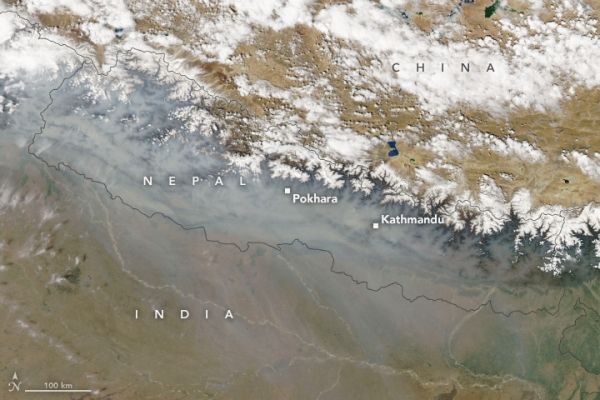Seasonal fires, lit to manage farmland and pastures, are common in Nepal in March and April. In 2021, the fires grew particularly extreme, as many spread and burned uncontrolled through forests.
Months of unusually dry weather has parched vegetation and turned it into tinder. Nepal received just a quarter of the rain it normally sees between January and April. Stretches of hot, windy weather have also exacerbated some fires, some of which burned in rugged terrain that made them hard to extinguish.
Scientists have used several satellite sensors to track Nepal’s active 2021 fire season. The Moderate Resolution Imaging Spectroradiometer (MODIS) on NASA’s Aqua satellite acquired this natural-color image of smoke enveloping much of the mountainous country on April 5, 2021. The Operational Land Imager (OLI) on Landsat 8 offered a more detailed view of a smoke pall covering the foothills and valleys near Pokhara on the same day. Most of the blazes have occurred in lower-elevation areas in southern Nepal, while the Himalayas serve as a barrier that directs smoke east toward India and Bangladesh rather than north into China.
Continue reading at NASA Earth Observatory
Image via NASA Earth Observatory


